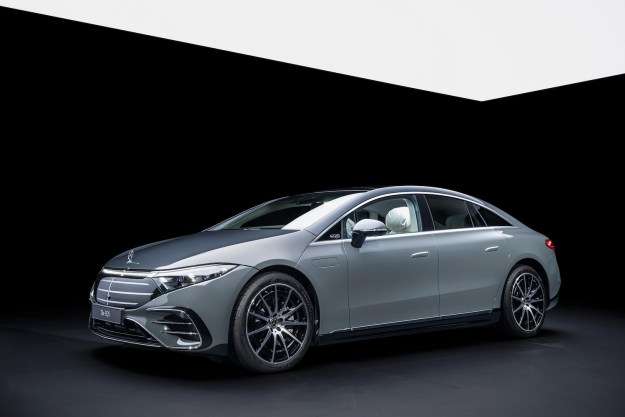The new line, including four different options, each with a color and monochrome version, is for industrial imaging products as well as for integration into tech that needs to sense other objects in the surroundings, such as the cameras used for for auto-park features on cars. While the lineup isn’t Sony’s first set of industrial sensors to use a global shutter, the latest set of options has higher frame rates, better low-light performance, and a more compact design.
Most CMOS sensors use a rolling shutter, which quickly exposes the image from top to bottom, one row of pixels at a time. The sensor works quickly to handle those rows of information, but for subjects moving faster than the shutter or when the camera itself is moving quickly, they become distorted, appearing to slant as the camera captures slightly different positions of the object as the sensor exposes from top to bottom. In industrial and sensing applications, the global sensor lends more accuracy.
The sensors also pack in higher frame rates with that global shutter, which could help enhance the accuracy of built-in sensing programs using the sensors.
Along with the more accurate shutter design, the line includes a number of updates from the versions Sony launched in 2015. The sensors are still the 1/2.9 size, but have fewer megapixels at just 1.58. When companies put fewer megapixels on the same size sensor, the size of each pixel increases, which translates into better low-light performance.
The sensors also include a variety of new ways to trigger the recording, including a new synchronization feature to sync signals from multiple sensors.
Of course, industrial sensors aren’t something simply ordered from Amazon, and Sony didn’t says specifically what types of sensing applications the sensors would be used in. But as other companies integrate them into their products, consumers will gain more accurate sensing systems in products ranging from vehicles to drones with obstacle avoidance.




